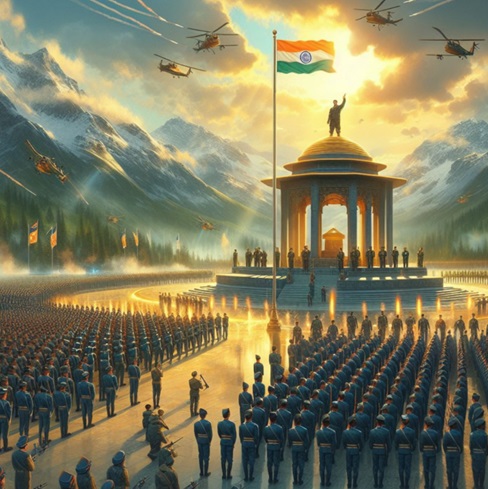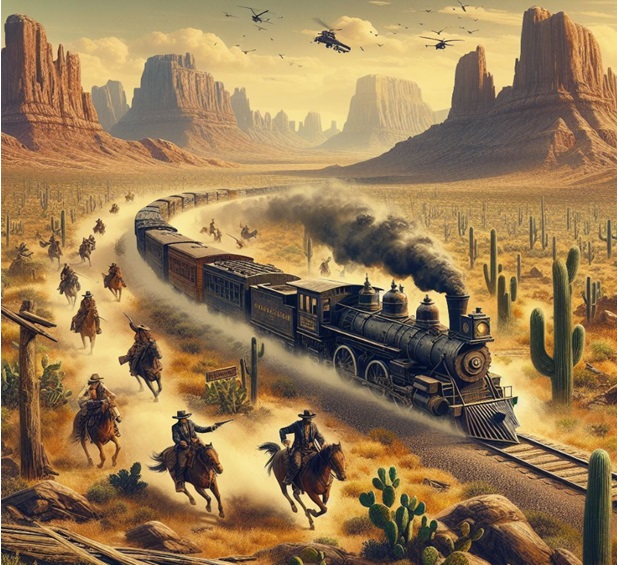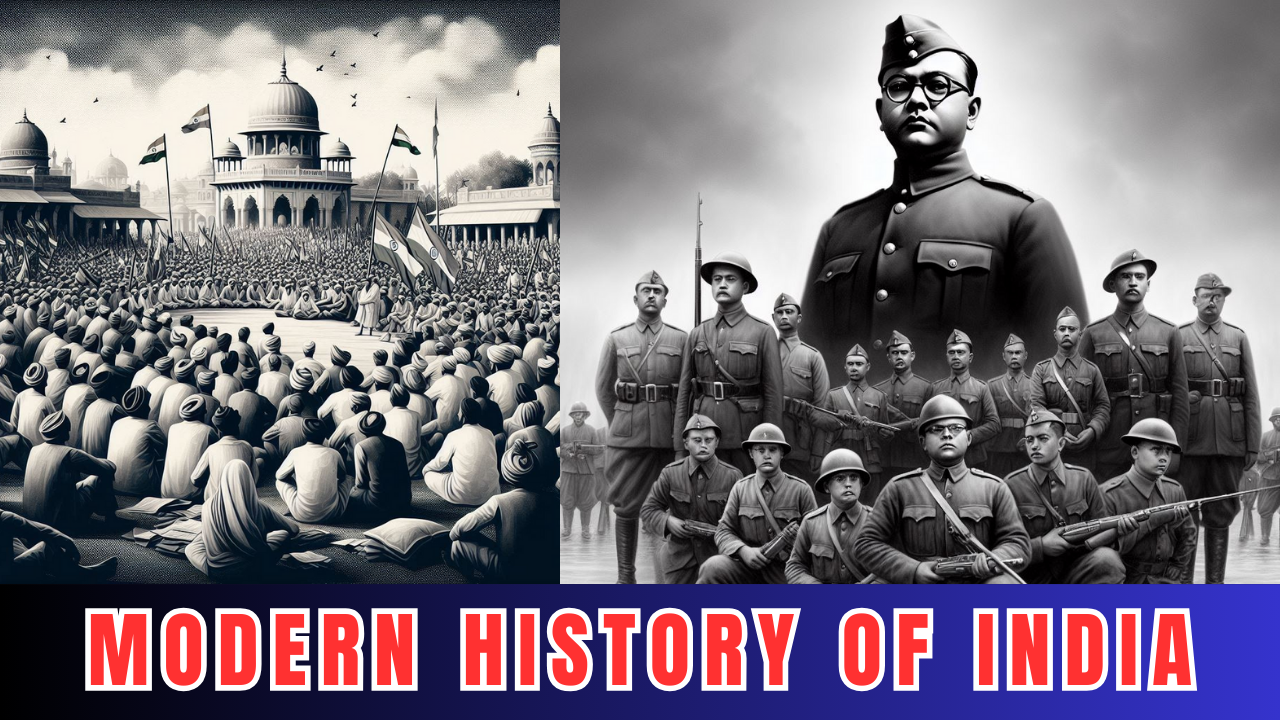26. What did Gandhi encourage the princes to use in their resistance against colonial rule?
A. Swords and shields
B. Their pens
C. Diplomatic negotiations
27. What was the purpose of the Desai-Liaquat Pact during the Indian independence movement?
A. To establish a separate Muslim state (Pakistan).
B. To address the political deadlock between the Indian National Congress and the All India Muslim League.
C. To negotiate with the British monarchs for India’s independence.
28. What did Liaquat Ali Khan give up in exchange for equal representation of Muslims and Hindus in the Council of Ministers?
A. Demand for a separate Muslim state
B. Demand for economic reforms
C. Demand for religious autonomy
29. Who was responsible for raising the flag of Azad Hind (Free India) in liberated India for the first time?
A. Mahatma Gandhi
B. Jawaharlal Nehru
C. Colonel Shaukat Hayat Malik (of the Bahadur Group)
30. Under the Government of India Act (1935), the federal legislature consisted of:
A. Two houses – Council of States and House of the People
B. One house – Legislative Assembly
C. Three houses – Council of States, House of the People, and Legislative Assembly
31. On 14 April 1944 INA Colonel Malik of the Bahadur Group hoisted the INA flag for the first time on the Indian mainland. Where is the place?
A. Kohima, Nagaland.
B. Moirang, Manipur.
C. Kolkata, West Bengal.
[there situated the INA Memorial Complex, there INA carried oud military administration for 3 Months]

32. What did Liaquat Ali Khan give up in exchange for equal representation of Muslims and Hindus in the Council of Ministers?
A. Demand for a separate Muslim state.
B. Demand for economic reforms.
C. Demand for religious autonomy.
33. The Satyagraha against the Rowlatt Act is known for being the first mass strike in India. What was the official name of the Rowlatt Act?
A. The Indian Sedition Act (1918).
B. The Anarchical and Revolutionary Crimes Act of 1919.
C. The Government of India Act (1935).
34. Lala Lajpat Rai died protesting which British government decision?
A. Morley-Minto Reforms
B. Government of India Act, 1919
C. Simon Commission
[Lala Lajpat Rai’s demise occurred while protesting against this all-British commission, which aimed to alter Indian constitutional law]
35. What was the purpose of Mahatma Gandhi’s Salt March (Dandi March)?
A. To protest against the high taxes on salt imposed by the British.
B. To demand complete independence for India.
C. To challenge the British monopoly on salt production.
36. Which coastal town in Gujarat was the endpoint of Gandhi’s Salt March?
A. Sabarmati
B. Surat
C. Dandi
37. Who headed the Cripps Mission sent to India in 1942?
A. Jawaharlal Nehru
B. Sir Richard Stafford Cripps
C. Mahatma Gandhi
38. What was the main purpose of the Cripps Mission?
A. To demand complete independence for India.
B. To negotiate with Indian leaders for constitutional reforms.
C. To secure Indian cooperation for the British war efforts during World War II.
39. Why did Muhammad Ali Jinnah support the Cripps Mission during World War II?
A. To demand complete independence for India.
B. To secure Indian cooperation for the British war efforts.
C. To negotiate with Indian leaders for constitutional reforms.
[Muhammad Ali Jinnah, leader of the Muslim League, supported the war effort and gained status in British eyes. Cripps had offered Jinnah the right to opt out of a future union with India.]
40. What was the focus of Gandhi’s address to the princes during the Quit India Movement?
A. Economic reforms
B. Military alliances
C. Acceptance of sovereignty by their own people
41. Which famous incident is associated with the Hindustan Republican Association?
A. Jallianwala Bagh massacre
B. Kakori train robbery
C. Quit India Movement

42. What was the significance of the Yellow Paper Constitution of the Hindustan Republican Association (HRA)?
A. It outlined the organization’s structure and membership rules.
B. It contained secret codes for communication among members.
C. It specified the financial management of the organization.
43. What was the main objective of the Mountbatten Plan?
A. To partition India into two separate nations.
B. To grant complete independence to India.
C. To establish a federal system in India.
44. When was the Muslim League founded?
A. 1905
B. 1906
C. 1911
45. Who was the first president of the All India Muslim League?
A. Sir Syed Ahmed Khan
B. Aga Khan
C. Nawab Salimullah Khan
46. Who proposed the Safety Valve Theory?
A. Dadabhai Naoroji
B. Gopal Krishna Gokhale
C. Lala Lajpat Rai
47. What was the main objective of the Safety Valve Theory?
A. To divert revolutionary energies away from the Indian National Congress.
B. To promote communal harmony.
C. To encourage direct action against British rule.
48. What was the other name for the Mutiny of 1857?
A. Sepoy Mutiny
B. Revolt of 1857
C. Indian Rebellion
49. What was the purpose of the Poona Pact?
A. To promote untouchability within the Indian nationalist movement.
B. To grant increased government representation to low-caste Dalits without separating them from the rest of the Hindu community.
C. To establish separate electorates for the depressed classes.
50. Who were the key signatories of the Poona Pact?
A. Mahatma Gandhi and Jawaharlal Nehru.
B. Madan Mohan Malaviya and Dr. B.R. Ambedkar.
C. Mahatma Gandhi and Dr. B.R. Ambedkar.

